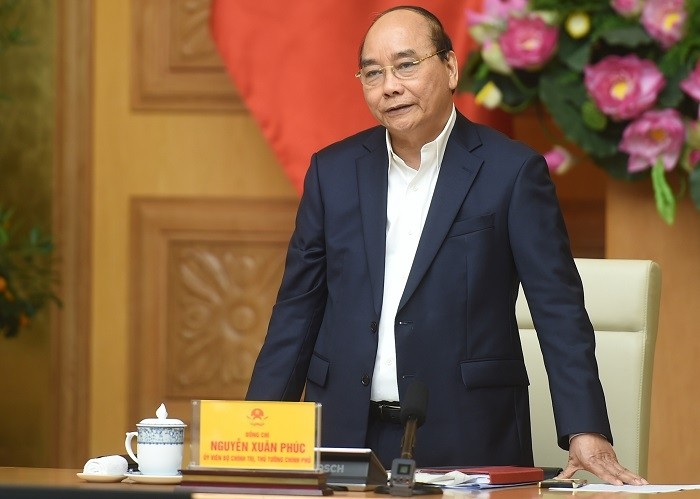Chairing a meeting discussing adjustments to the master plan for the development of Da Nang until 2030, with a vision to 2045, in Hanoi on March 1, the Government leader lauded the central coastal city for its close coordination with ministries, sectors and advisory units, and serious collection of opinions from local people and socio-economic organisations during the planning process.
PM Phuc agreed with the vision determining Da Nang as a key tourism & service city, a centre of Vietnam’s maritime economy, a gateway on the East-West Economic Corridor, and a safe city worth living in, but he emphasised the need to clarify what the concept “worth-living” truly means.
As a city boasting one of the most beautiful beaches in the region, Da Nang should pay more attention to wastewater and climate change issues, the leader said, suggesting the city seek new development drivers apart from tourism.
He stressed the policy of combating group interest in the implementation and adjustment of the plan and the need to fight corruption and negative acts in the implementation of the detailed plan, while asking for the development of a mechanism monitoring the process, and any adjustments in either the plan or its functional subdivisions.
The planning work must go in hand with the realisation, the PM insisted.
 |
General view of the meeting. (Photo: NDO/Tran Hai)
As reported at the meeting, the Da Nang People’s Committee signed a contract with a joint venture between the Sakae Corporate Advisory Company and Surbana Jurong consulting company (Singapore) to develop a project on adjusting the Da Nang city master plan until 2030, with a vision to 2045. During the process of building the project, the municipal People’s Committee organised three international seminars and collected feedback from local residents, businesses, departments, and central agencies.
According to adjustments, Da Nang is set to be part of the global supply chain network and a gateway on the East-West Economic Corridor by 2030. The city is also expected to become a destination for those seeking a global lifestyle, a centre of tourism and services, and a maritime economic hub both in Vietnam and the region at large.
In the long term, Da Nang aims to become a special-class and an international city. Its population is predicted to stand at about 1.79 million by 2030 and its urban area is to cover 31,836 ha, accounting for more than 32% of the local land area.
















